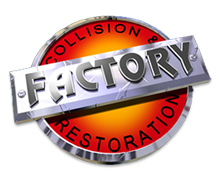Supplemental Restraint System (SRS) in your Vehicle
The supplemental restraint system, or SRS, in your vehicle does exactly what its name implies: it supplements the restraint, or seatbelt, system. In the case of a collision, the primary function of the supplemental restraint system is to deploy airbags, although modern systems may initiate other actions, like reclining the driver and passenger seatbacks into a safer position or releasing curtains to protect occupants from broken glass when windows shatter.
When a vehicle collides with another vehicle or object, the airbag sensor signals the airbag to open. At the very least, a vehicle has one airbag in front of the driver and one for the passenger, but many vehicles have additional side airbags or rear airbags to further protect the vehicle’s occupants.
Your SRS Warning Light
On the dashboard, your vehicle has warning lights that are tested every time the vehicle starts. When a light remains on after the first 10 seconds or so when the vehicle is started, it’s a sign that there is an error with a system in your vehicle. The SRS system light will either say “SRS” or it will be an image of a person wearing a seatbelt with an airbag expanded in front of them.
If your light remains on and there is an error with the system, your airbags may not deploy in the case of a collision and you should have your vehicle examined as soon as possible. In some cases, if your insurance company can determine that there was an error in the vehicle that kept the system from functioning properly and the vehicle owner failed to have it taken care of, the insurance company may not pay for medical bills that result from a crash.
SRS Testing and Functionality Following a Collision
If your vehicle has been in a collision, there are several steps you can take to ensure that your SRS is functioning properly.
1. Check whether the airbags or any other safety features have been activated. This can include airbags, seat belt retractors, curtains, etc.
2. If you can, start the vehicle. Check for the SRS light. It should illuminate for a few seconds and then turn off. If it does not illuminate or if it remains on, your system may not be working properly.
3. Examine your seat belts. Pull every seat belt out all the way and look for signs of wear, like tears or strange sounds.
4. Buckle the seatbelts and ensure that all buckles still work.
5. If your vehicle has a passenger weight sensor, sit in the passenger seat to test whether it is functioning.
6. If you are unsure about any of these steps, notice any wear or malfunctioning parts, or there is a problem with your SRS, take your vehicle to a collision repair shop.

Recent Comments